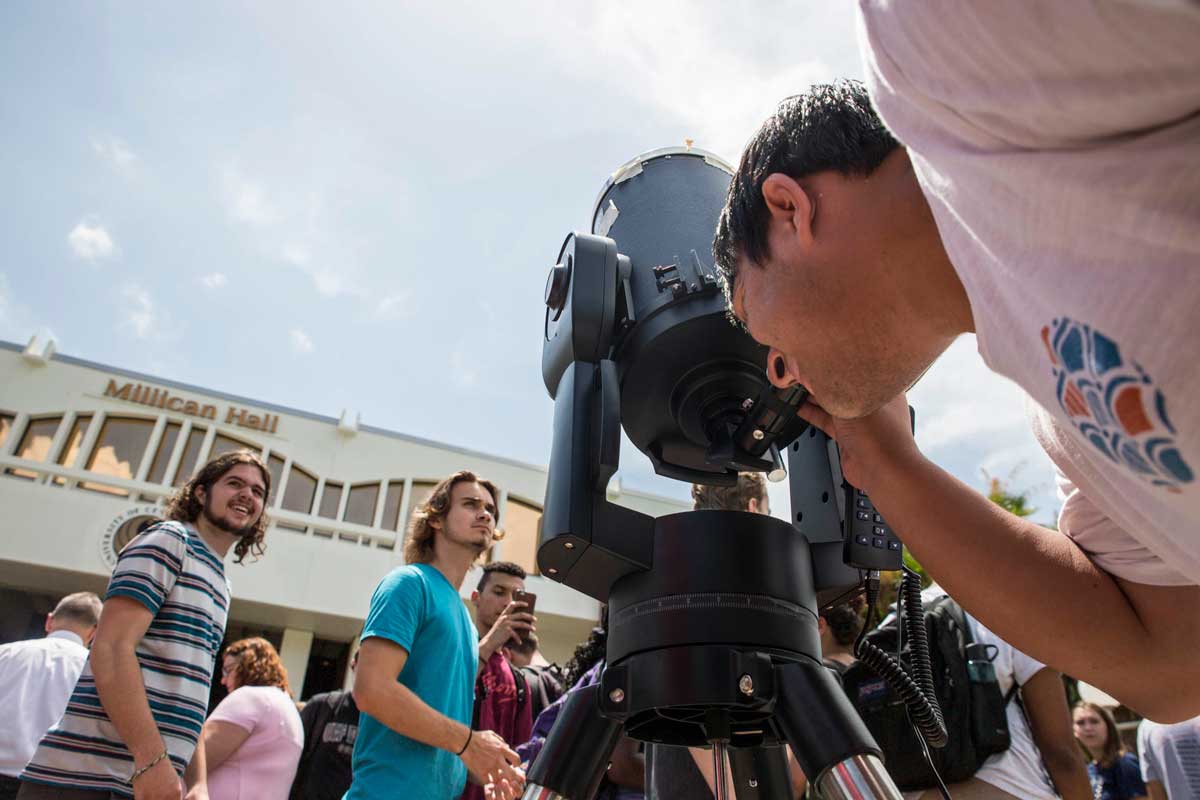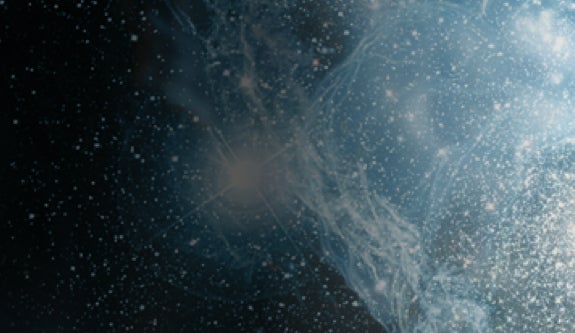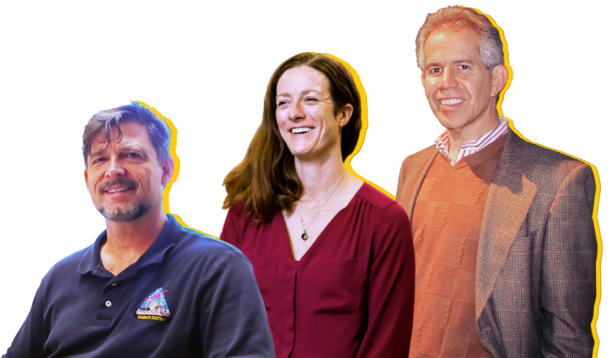Space university – who wouldn’t want to go there? The same year that the United States’ Apollo 8 mission first sent humans to orbit the moon, the University of Central Florida, aka “space university” opened its doors for classes and, like the universe, has been expanding the limits of human knowledge ever since.
That was 1968, and now, in honor of the 50th anniversary of the country’s historic Apollo 11 mission that on July 20, 1969, put humans on the moon, we’re taking a look back, and a look forward, at UCF’s role in America’s space program and how that role has evolved.
UCF’s close role to America’s space program is tied to our proximity to Cape Canaveral Air Force Station and Kennedy Space Center, the launch site of Apollo 11.
The university was designed to support America’s space mission, and some of the earliest programs that continue today focus on sharing resources between UCF and KSC. This includes NASA staff teaching and taking classes at UCF; UCF students having intern and scholarship opportunities with NASA; UCF having access to some of KSC’s advanced facilities; and UCF and KSC collaborating on research, including ways to propel rockets into space.
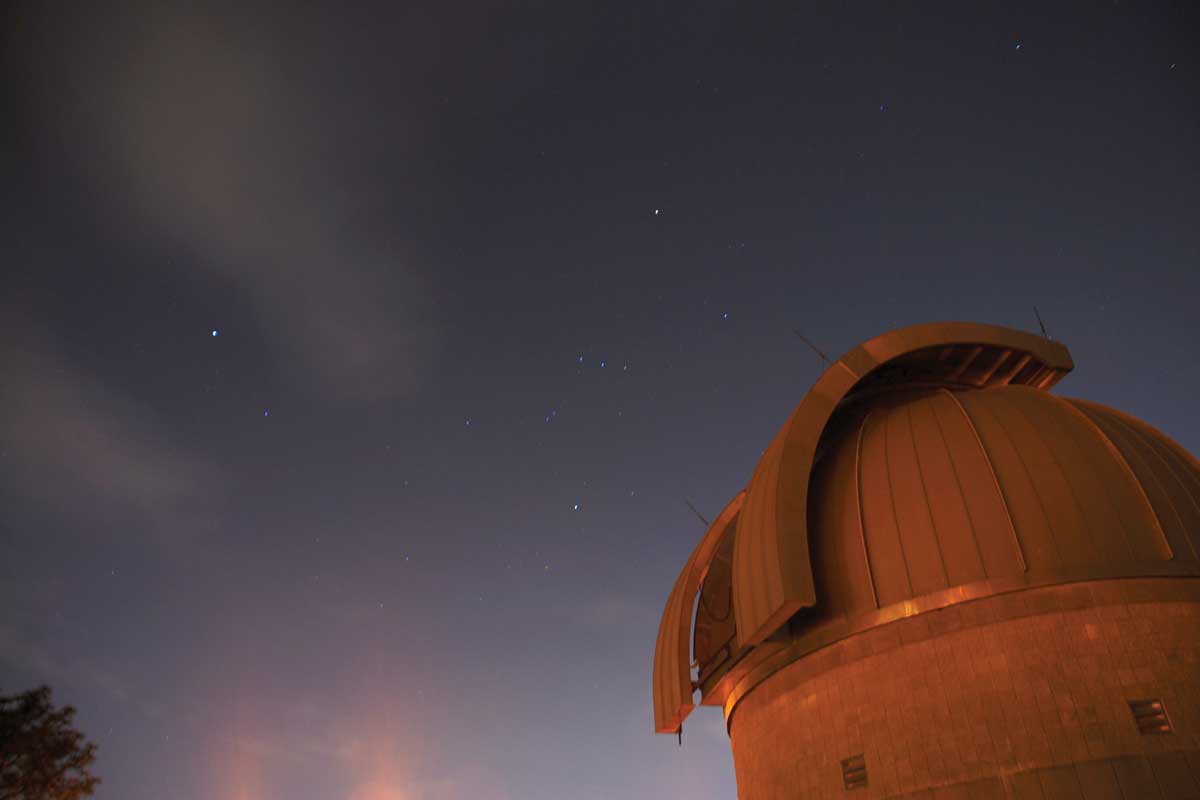
Expanding UCF’s Breadth of Space Research
Space research at UCF has changed over the years by expanding its scope of work, says Yan Fernandez, an associate professor in UCF’s Department of Physics.
Fernandez joined UCF in 2005, and his research focuses on the composition and physical properties of comets and asteroids. He is the director of UCF’s Robinson Observatory and is also a principal scientist helping with the Arecibo Observatory.
He says in addition to UCF’s traditional space work, such as its classical astronomy research using telescope observations, the university now has a wide range of programs, including those that examine harvesting space resources and putting hardware into space.
“Any student who comes here will find a wide variety of future career paths once they earn their Ph.D.” — Yan Fernandez, associate professor and director of UCF’s Robinson Observatory
“We’re trying to position ourselves so that anyone who’s interested in doing something space related will find a collaborator here,” Fernandez says. “And any student who comes here will find a wide variety of future career paths once they earn their Ph.D.”
Subith Vasu, an associate professor in UCF’s Mechanical and Aerospace Engineering Department, says another change has been the expansion of commercial interests in America’s space program, a shift that has also been reflected in space research at UCF.
Vasu’s research includes working with the U.S. Federal Aviation Administration’s Center of Excellence for Commercial Space Transportation to improve leak-detection technology in spacecraft.
“UCF is in a prime position to help NASA geographically and educationally,” Vasu says. “We have highly qualified faculty and students who are eager to work for NASA and industry.”
“Commercial space is going to be a big thing, where private entities and industry, like SpaceX, Blue Origin and Boeing Aerospace, will be defining the future of the U.S. space program, along with NASA,” he says.
Mike Conroy ’84 has seen UCF’s space program evolve firsthand as a UCF student, NASA employee and now as manager of simulation and student projects with the Florida Space Institute.
“In 1979, there was no space at UCF,” Conroy said. “We were engineering students and students in electronics, mechanics and fluids. Computer engineering had just started the engineering math and computer science degree.”
Conroy, a third-generation Orlando resident, graduated from UCF in 1984 with a degree in electrical engineering and worked with NASA on the shuttle program, SpaceLab, moon and Mars explorations and more. After retiring from NASA, he started work at the Florida Space Institute to help integrate student projects with NASA needs.
“UCF is doing a great job preparing students for the needs of space,” Conroy says. “I mentor senior design teams, and students on my teams are going to Boeing, Lockheed, NASA, SpaceX and Blue Origin. A focus on integrated teams is growing, and that is what industry is looking for.”
Josh Colwell, a Pegasus Professor in UCF’s Department of Physics, said he has seen the number of planetary sciences faculty double since he arrived in 2007.
“Since that time, the Florida Space Institute has been re-established as a space science research institute that now manages the world’s largest active radio telescope, the Arecibo Observatory in Puerto Rico,” Colwell says. “We have launched payloads to the International Space Station as well as a CubeSat into Earth orbit and multiple payloads on commercial suborbital vehicles. We are also participating on several major NASA planetary missions and have the Center for Lunar and Asteroid Surface Science, a major NASA-funded research center on lunar and asteroid science.”
Colwell is director of UCF’s Center for Microgravity Research and has worked on numerous high-profile missions including Voyager 2 and Cassini.
“I see UCF’s space program heading onward and upward,” Colwell says. “Our participation in spaceflight missions will expand beyond data analysis and scientific participation on mission teams to more development of instruments and small satellites for future missions.”
“UCF’s relationship with NASA is really providing a reservoir of scientific talent that enables the goals of our space program. That kind of talent is not found in most universities in the country.” — Dan Britt, Pegasus Professor
In comparison with other universities, UCF is in a select group because of its space research, says Dan Britt, a Pegasus Professor in UCF’s Department of Physics and director of the Center for Lunar and Asteroid Surface Science, who joined UCF in 2003. Britt has been instrumental in NASA missions such as the Mars rovers, Deep Space 1, New Horizons and Lucy.
He says NASA does much of its space science at universities, which allows it to tap into leading researchers to ensure its robotic and human missions are done safely and efficiently. But with established programs in space and planetary sciences, UCF is in a unique position.
“UCF’s relationship with NASA is really providing a reservoir of scientific talent that enables the goals of our space program,” Britt says. “That kind of talent is not found in most universities in the country, and it allows UCF to be part of an elite group that actually has significant input into the nation’s space program.”
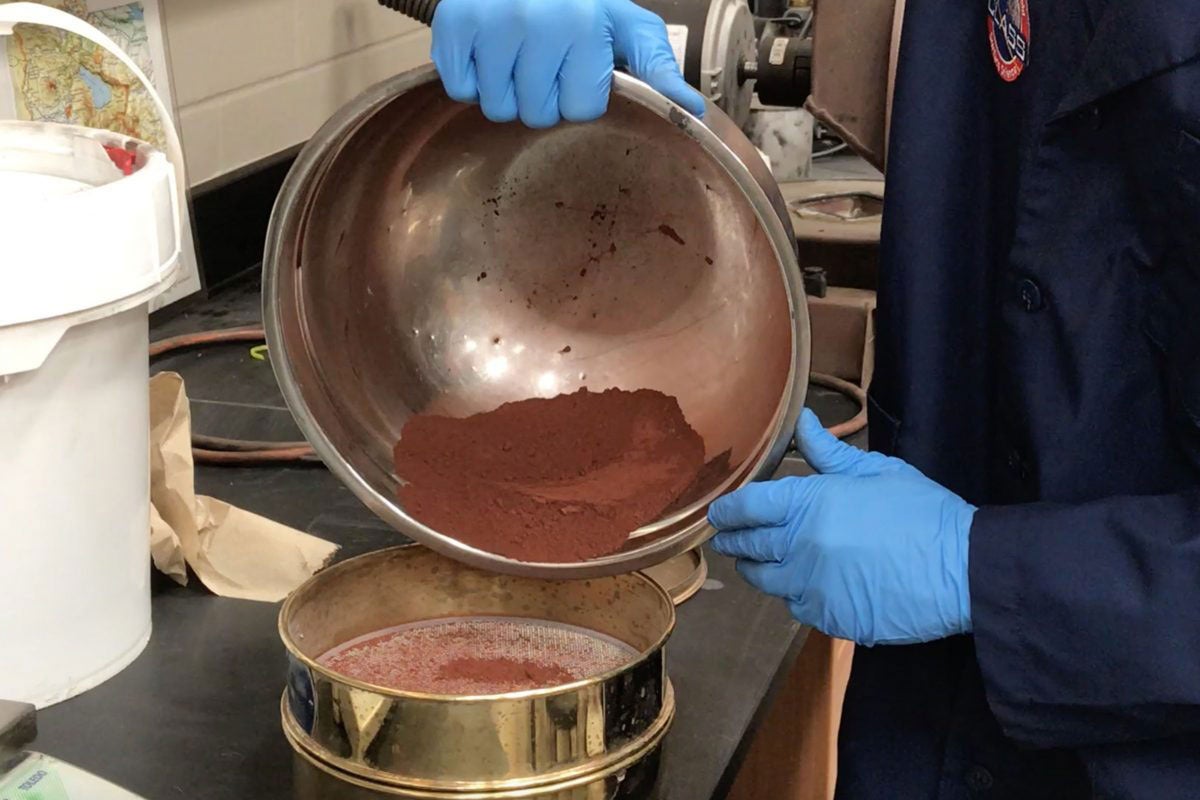
Stellar Connections
UCF has researchers tied to major space missions exploring Pluto, Saturn, the Kuiper Belt, Mars, the moon, comets, asteroids, Jupiter and exoplanets.
Many of the researchers are from UCF’s Florida Space Institute and from UCF’s Department of Physics’ Planetary Sciences Group.
Their work helps protect us from getting hit by asteroids, and it’s preparing us to one day get civilization off-planet, as well as access the vast resources of space. They work with scientists and engineers around the world to explain how the planets and the universe formed.
UCF even leads the management of one of the world’s largest active radio telescopes, the iconic Arecibo Observatory in Puerto Rico. The giant telescope’s tasks include tracking and studying the properties of potentially dangerous near-Earth objects as well the properties of planets, the behavior of pulsars and the chemistry and structure of galaxies. It’s also used to search for evidence of alien life. In fact, the most powerful radio message ever sent into deep space and aimed at extraterrestrials was sent from there in 1974. There’s also a new effort to create a modern-day message.
Our scientists are also part of the teams working to get us back to the moon, whether it’s to make sure high-velocity moon dust and rocks don’t blow away our equipment when landing or to scout and map out the moon’s surface using infrared imaging ahead of humans’ return.
In addition, our space researchers sell simulated Martian dirt for experiments, make small CubeSats that house space research experiments, and develop sunscreens and deep-space suits to protect astronauts from radiation.
Many of our faculty and researchers are NASA veterans and hail from some of the biggest, most important programs in U.S. space history, including the shuttle program, Voyager 2, Cassini, the Mars rovers, and the space telescopes. Six of our current faculty even have asteroids named after them.
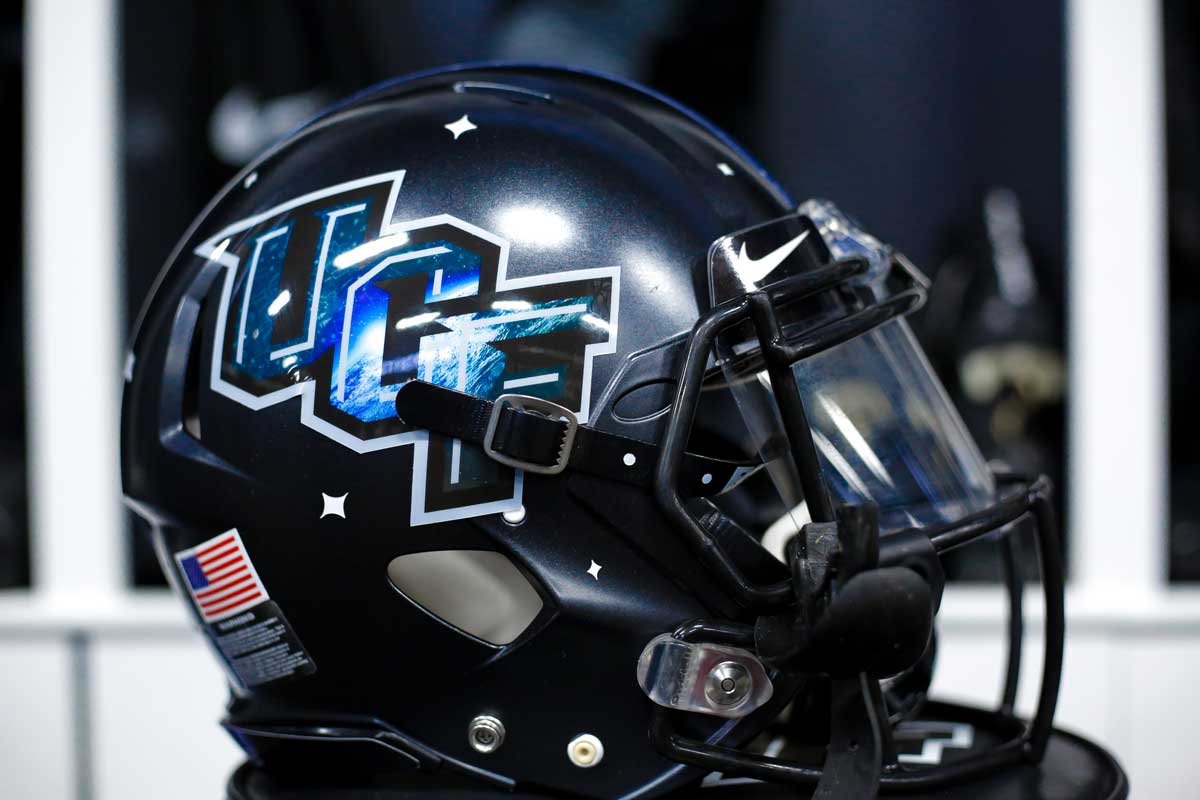
Did you know?
- An astronaut, John Young from Orlando, spoke at UCF’s first commencement.
- You can see the rings of Saturn and more at the Robinson Observatory on campus.
- We’ve had two UCF grads who were astronauts — Fernando “Frank” Caldeiro ’95 and Nicole Stott ’92.
- A UCF grad made the longest free-fall jump ever — from space, 26 miles above ground. Another UCF grad was the first person to send a 3D printer to the International Space Station.
- We’ve had research fly on SpaceX, Blue Origin and Virgin Galactic
- There’s a podcast from UCF planetary scientists all about space, sci-fi and new discoveries.
- A UCF Citronaut has flown in space.
- We have a space football game complete with special uniforms. This season’s UCF in Space game is scheduled for Nov. 2 against Houston.
- You can get a doctorate in aerospace engineering, and UCF produces more graduates who are hired by aerospace and defense companies than any other university in the nation. So, if you want to be a doctor of rocket science, UCF is the place.
- The country’s gateway to the universe, Kennedy Space Center, is only 35 miles away from campus. Its proximity to the equator gives rockets launched from there an extra boost.
And the obvious: Our streets have space names. Our founding motto was Reach for the Stars. Our UCF seal includes a constellation.
